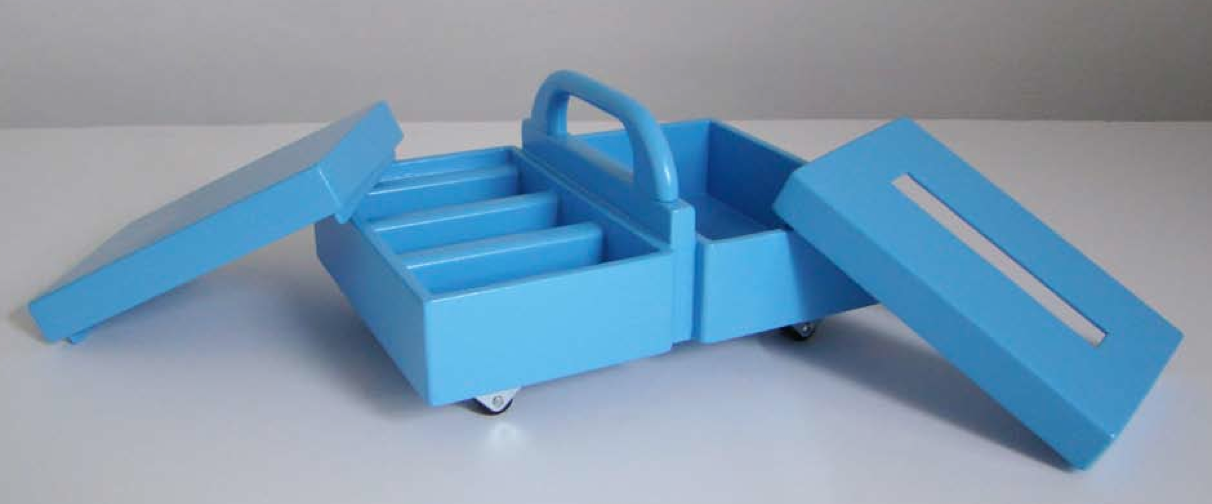Plezant
Improving the social interaction between elderly in institutional care settings
Information
Author: De Ruiter, H.A.R.
Contributor: Molenbroek, J.F.M., Ruiter, I.A.
Faculty: Industrial Design Engineering
Department: Industrial Design
Programme: Master of Science Design for Interaction
Type: Master thesis
Date: 26-05-2014
Keywords: Social interaction | Communication | Elderly | Care facilities | Residential homes | Game | Design
Abstract
Activity plays an important role in maintaining health and avoiding excess disabilities in later life. This is not only true for physical activity, but also for mental activity and the according mental health. Example of a beneficial activity that keeps the brain healthy and preserves mental functionality is social activity or in other words social interaction/communication. It stimulates the brain and builds cognitive reserve which diminishes the chance on mental deterioration. Besides, it is fun to do and will boost peoples mood. All this is especially important in institutional care facilities where the environment is often tranquil if not boring. Improving the social interaction of elderly in such facilities therefore became the main goal of this project and as a result of this, institutionalized elderly who are cognitively healthy and want to have (more) social interactions became the target group.
This graduation report describes the design process of designing a product that can fulfil the before mentioned goal.
First of all, a literature research is conducted to gather knowledge and information about the target group, their way of communicating and the effects of their interactions on their well-being. Because of the extensive amount of research and literature about elderly and their well-being, six specific research questions have been composed that are all related to the main goal. These questions helped to focus when searching information.
During the analysis phase, the group of ‘elderly living in care facilities’ was further investigated. Their demographics and cognitive and physical condition is considered. This is done to create a clear view on the target group and help set boundaries. The group of ‘elderly living in care facilities’ is so divers that without these boundaries, it would have become difficult to create a well matching and fitting product for the envisioned user group.
There was extended contact with the target group throughout the complete project. During the target group research for example, observations were done to observe the current situation and peoples’ daily activities in care facilities. Besides, conversations were held with residents as well as staff. Both broadened the understanding of the target group, delivered insight in their needs, made it possible to reflect on the information found in the literature research and analysis phase and provided inspiration for developing a suitable product.
Literature and contact with the target group showed that although elderly are often willing to be socially active, conversations or social interactions do not develop. Stereotypes and reservations make it difficult to select a conversation topic resulting in silence. The to be developed product should therefore help with the selection of a conversation topic, taking away this threshold and stimulating people to start communicating.
Observations, user tests and also literature showed that this could be accomplished by developing a product in the form of a game. A game can create a casual, playful, relaxed and pressure free atmosphere which is beneficial for the development of social interactions.
To find out what is already available in the field of games for elderly, existing games were analysed. This analysis helped to eventually come up with a new and nonexistent game. Next to this, it resulted in three additional goals besides the main goal, which helped to guide the development of the game.
During the synthesis phase the acquired information, knowledge and experiences from the previous phases were translated into multiple ideas for a game. Three of these ideas were prototyped and tested with residents of a care facility. Their feedback and opinions helped to make design choices. Eventually one game concept is chosen that subsequently was further elaborated during the detailing phase. This chosen concept fitted the target group and had the envisioned effect: it stimulated elderly to have social interactions.
In the last phases of this project, the developed game is prototyped and the future production of the game is considered. Finally a final user test with the target group is performed. The eventual game called ‘Plezant’ is evaluated with the help of the residents. They described the game as fun and pleasant to play and expressed that the game helped them to have conversations and above all offered them a good time.



